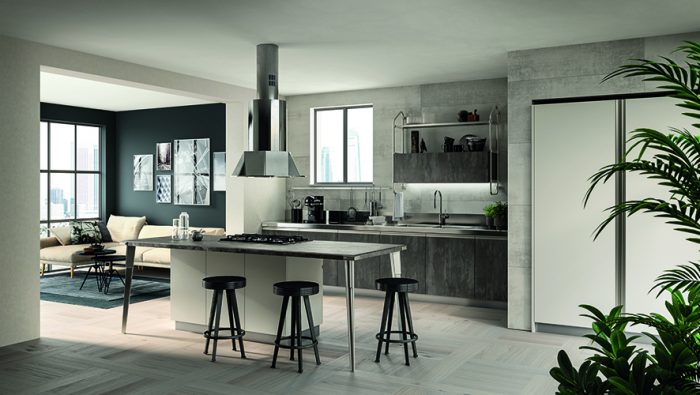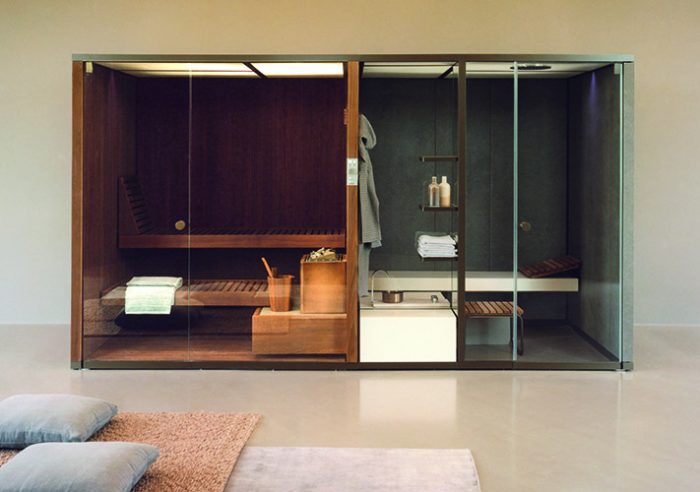The coronavirus pandemic has changed every part of life, but how has it changed the face of kitchen and bathroom design?
The pandemic has changed kitchen design forever. Even after the virus is under control, some businesses may see home working as the new way forward.
With more people having to carry on their office job from home, what was always the hub of the home has had to up its game.
Research by Häfele shows that 54% of homeowners expect to spend over half their week working from home, prompting category manager Elizabeth Briggs to suggest: “There’s a clear opportunity for designers, retailers and fitters to advise customers on the best way to create a more permanent working-from-home solution.”
Broken-plan kitchens are growing in popularity and their use of zoned-off areas lends itself particularly well to post-pandemic adaptability.
Scavolini chief executive Fabiana Scavolini observes: “The flexibility of living space has taken on a new significance. Broken-plan creates a single multifunctional space, but with subtle elements of separation, such as glass doors.”
Scavolini also proposes dividing up the space with pocket doors that disappear into a recessed compartment when not in use.
BIID-accredited interior designer Nicola Burt acknowledges that “whole families are at home together juggling working from home and home schooling, so requirements for quiet spaces to concentrate, work and relax are more important than ever.”
And with the first lockdown seeing some great weather, she points out that many people made use of outdoor spaces. Alice Hood at Roundhouse agrees: “In the summer, indoor/outdoor living was maximised by open- and broken-plan spaces reaching out into the garden and providing more social space.”
But with all these various activities in the same space, Tom Howley, owner Tom Howley, points out: “The most important thing to bear in mind is storage to keep your kitchen looking clear and sleek. Under-island counters in floor-to-ceiling units, or above the stove top, make the most of the space.” Pictured as the featured image is the Tom Howley kitchen Hartford.
If there’s one thing kitchen designers have always been good at, it is adapting their designs to what people need. And that has never been more important.
Bathrooms
In bathrooms, hygiene has stepped to the fore in the post-pandemic world. Products and finishes that promote cleanliness and inhibit the build-up of germs and bacteria are top considerations for coronavirus-savvy consumers.
Many brands are now offering antibacterial and bactericidal coatings and glazes for their ceramics and sanitaryware that inhibit the build-up of germs and viruses. And with freestanding baths still popular, some are promoting the properties of copper, which is said to kill bacteria and viruses within hours or minutes that linger for longer on steel.
Minimising clutter is also a priority. Fitted furniture and vanity units can help and aid cleaning, while hiding away all the plumbing. Wall-hung furniture and WCs also allow easy access to floors to aid more thorough cleaning, while handleless furniture helps eliminate another area that could harbour germs.
Wall panelling is growing in appeal too as it is easy to clean and avoids the chore of keeping grouting clean on tiled areas.
Retailers highlight an increase in demand for touchless and sensor products. Once the preserve of public places, more of these are now finding their way into domestic bathrooms.
Rimless and self-cleaning toilets are proving popular and promote greater cleanliness, while shower toilets are also enjoying a surge in both awareness and adoption.
Today’s buyer also needs a place to relax and promote wellness. A survey by Grohe shows that 43% of people regard the bathroom as a place for well-being, particularly, adds CP Hart’s head of design Yousef Mansuri, “during times of anxiety”.
Saunas and steam rooms are one area where many retailers have reported increased interest, while waterfall showerheads can add a touch of luxury without breaking the bank. A flush-to-floor shower also adds that spa/hotel feel while facilitating thorough cleaning.
Freestanding baths add a luxurious style statement, while a whirlpool baths steps that spa-like experience up a notch. Other senses can be stimulated too, with mood lighting, Bluetooth speakers and products that offer aromatherapy and chromotherapy.
John Naughten, MD of The Bathroom Design Studio in London, concludes: “With so many people intending to work from home for the foreseeable future, the opportunities are definitely there.”

